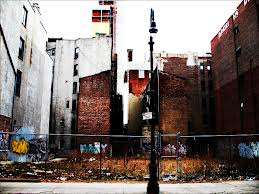When thinking about architecture as a science, one can assume this discipline is highly complex and can also be described as an illusive field with a broad sense of existence. Professors and other students have often asked me, “What is architecture?” As I begin to answer, they then ask a plethora of questions which imply contradicting characteristics in my logic. However, these same individuals cannot give an answer themselves. I see this as a problem within Architecture in today’s society. So many designers have different definitions for the term Architecture, but then we wonder why our cities do not have a cohesive design, which can function as a whole instead of segregated autonomous pieces of infrastructure.
According to Manuel Delanda in Organic life, a new paradigm must be implemented in order to change the way we view cities towards a positive outcome. But what will that paradigm be? Could it be the realization that suburbs are unnecessary and an ostensibly dense from of living should become the new norm for our society? So far we have spoke about informal cities, and how there is a method to the seemingly chaotic madness that occurs on a day-to-day basis. I see these methods as a contemporary paradigm that could cause a change in our basic assumptions.
In the “Emergence in Architecture” reading it says,” Emergence requires the recognition of buildings not as singular and fixed bodies, but as complex energy and material systems that have a life span, and exist as part of the environment of other buildings, and as an iteration of a long series that proceeds by evolutionary development towards an intelligent ecosystem.” I would like to replace the term “buildings” with the term “cities”. We should look at cities as complex energy and material systems that have a life span and exist as part of the environment of other cities. Cities are made up of neighborhoods, and neighborhoods are made up of a diverse group of individuals who occupy them. Our neighborhoods constantly change, some for the better, and in most cases for the worse. In the latter scenario, we see neighborhoods, which were once highly coveted areas turn to “ghettos” filled with crime and poverty. However, if this highly coveted span of a neighborhood was taken into consideration before it came to fruition we could possibly avoid the downfall of certain areas, which inevitably separate our cities today.